A Complete Step by Step Rim to Rim Training Plan
Imagine 24 miles of staggering descent, rugged red rock trekking, potentially blistering heat, and a monstrously steep ascent waiting for you at the end of a full day of hiking! That is what you are getting yourself into if you decide to take on the iconic Rim to Rim hike in Arizona’s Grand Canyon National Park! Before you step foot on this breathtaking and awe-inspiring trail, make sure you’ve developed the right foundation by using a complete and detailed Rim to Rim training plan. Why do you need to go through training for a Rim to Rim hike? Because as beautifully posed as those pictures on Instagram are, the Rim to Rim hike has to be taken seriously, and treated with the respect it deserves. There are deaths every year in the Grand Canyon and below the Rim, and many of those are hikers that are unprepared or do not understand the gravity of the challenge they are undertaking. There is a misconception that because it is a highly visited National Park, that the Grand Canyon must be easily accessible to all. Do not buy into this myth. Instead, develop a plan for training for a Rim to Rim hike, and put in the necessary legwork ahead of time. This will enable you to responsibly and safely not only enjoy one of the most spectacular scenes in the world, but confidently conquer one of the most difficult hikes on the globe, the Grand Canyon Rim to Rim hike. The most important part of training for a Rim to Rim hike starts here, with this complete, detailed, and step by step guide that covers everything leading up to the day of the Rim to Rim! You can’t afford to skip this step – start preparing your own Rim to Rim training schedule today! For all the grueling work that goes into pulling off a Rim to Rim hike, the payoff is more than worth it to know that you are that hiker with the grit and determination to put in the work to properly bag one of the hardest hikes out there! And you’ll be among the small handful of Grand Canyon visitors who actually get to experience the whole Grand Canyon, from rim to canyon floor!
Disclosure: Below are some affiliate links-these are all products I highly recommend. I won’t make any recommendations on this page that I haven’t tested or personally used! Enjoy this guide to training for the Rim to Rim in one day!
Table of Contents
Complete Rim to Rim Training Plan
Below are all the steps to developing a well oiled Rim to Rim training plan. Follow these steps and you will be prepared and ready for the epic Rim to Rim hike, no matter what stage you are at today!
Step #1: Start Formulating Your Rim to Rim Training Schedule
One thing I have learned from experience time and time again, is that there is no way you can just wing your training. Whether you are training for a half marathon, an invigorating long distance trail run, a century bike ride, or a 24 mile long day hike, the key is being INTENTIONAL. Your current fitness level, your pace, your strength, your location and accessibility to training hikes – all of that is not as important as an intentional mindset. The fact that you may have never hiked more than 5 miles before is less important at this moment, than having an intentional mindset and an intentional plan.
The foundation of a well implemented Rim to Rim training plan is INTENTIONALITY! This means you have to intentionally SCHEDULE your training hikes, your rest days, your cross training, your nutrition, and everything in between.
As you begin training for the Rim to Rim, know that your hiking training plan will include longer and gradually incremented training hikes, rest days, and cross training days. These 3 components will need to occur on a weekly basis. Get your calendar out now and a pencil or pen, and get ready to schedule your training calendar!
Step #2: Schedule Your Training Calendar
Hiking can be largely a mental game. If you tell yourself that you will get around to hiking those training hikes “when I have the time”, I promise your mind will attempt to talk you out of it every time. I know because I have been there plenty of times.
You have to intentionally set aside the time by actually scheduling every component that goes into training for a Rim to Rim hike. And consistency is key! The 3 big consistent components of a Rim to Rim training plan are training hikes, cross training days, and rest days.
The one thing that has worked like magic for me that I would highly recommend, is to first of all, determine a designated weekly “hiking” day. I know this isn’t always possible, but it is enormously helpful to attempt it. This will be the one day a week you do your long training hike. If you don’t designate a day, it is much easier to come up with a million reasons why you can’t get around to hiking that week.
My designated hiking training day is Saturday, as I will demonstrate when I share my own personal hiking training calendar in this post. Sure, things come up and adjustments have to be made at times. But if you have your hiking training days marked on the calendar (and I do literally schedule all my hiking training days on my calendar 4 months out or longer) and have given them priority, you will find that other things that pop up have a way of being able to be worked around your training schedule.
So yes, I literally have my hiking training days marked on my calendar, months in advance, and I highly recommend you plan out your hiking training days as well. I even go so far as to check off or highlight each hike on my personal calendar when completed.
Now the next somewhat obvious question is, how many weeks out am I scheduling weekly training hikes? How far out do you need to start training for a Rim to Rim hike? This is an individual question that has to be built around where you are at the moment personally.
You should NEVER attempt to “wing it” when hiking a Rim to Rim hike. Please don’t do one 6 mile hike prior to attempting and think you are ready. When developing your own Rim to Rim training schedule and calendar, be honest with where you are, and how much time it will take to get to the final goal.
The final goal is that epic 24 mile hike with a ton of environmental elements and elevation gain to deal with. That means, you need to have at least a couple other long distance practice hikes under your belt before attempting the Rim to Rim, at least 14 or 15 miles in length.
Another big NO is jumping immediately from a 3 mile practice hike to a 16 mile practice hike in a week. The key to hiking training is to gradually increase in INCREMENTS. This is a critical key in training for any long distance event, from cycling to running to hiking! If you skip this step and make huge leaps, you are much more likely to face injuries, and that will derail you quicker than the time it takes to properly progress in increments.
Given all of this, now it is time to work backwards and determine how much time you may need to be ready to hike the Rim to Rim. Be honest, and determine where you are now.
For example, if your current hiking abilities are in the 3 mile range, then you are going to want to start there. Do a couple weeks of 3 mile practice hikes in a row. Then move up to 4 mile hikes for a couple weeks. Then move up to 5 mile hikes for a couple weeks. And so forth. Gradually, you’ll get up into the double digits. These are significant distances, so don’t skip weeks, and allow your body time to “acclimate”. If you can, allow yourself additional time at each increment to really solidify your foundation.
Below is an example of a similar hiking training plan I have used for many long distance hikes around the country, from the 21 mile highest point in the country hike at Mt Whitney, CA, to Rim to Rim hikes and Rim to River hikes, to Guadalupe Mountains’s 20 mile long McKittrick Canyon hike.
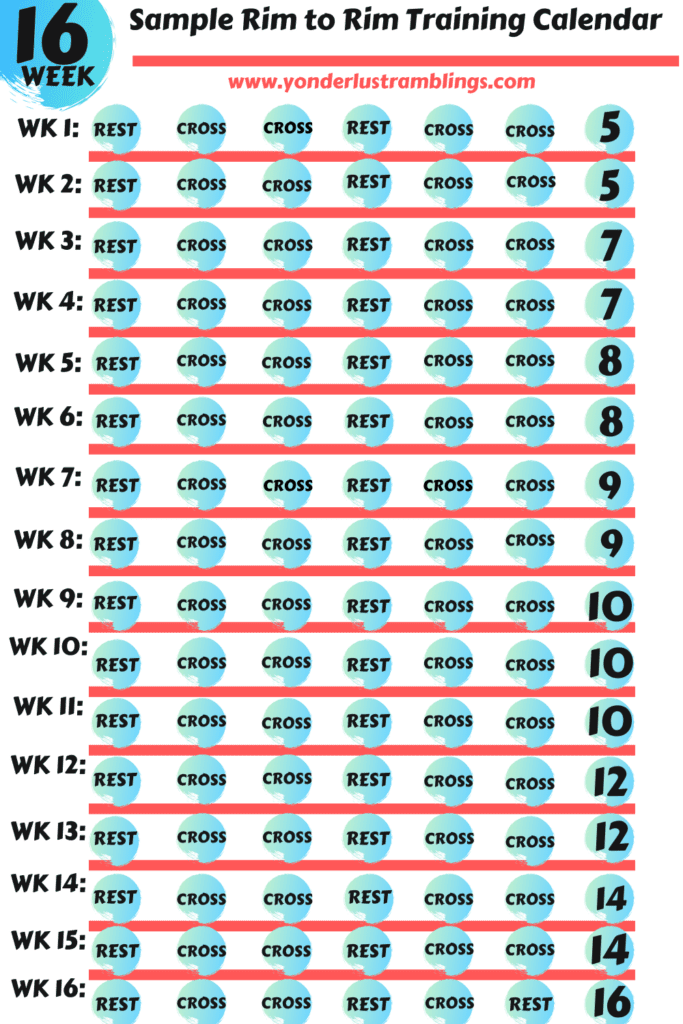
*Want professional coaching and support to help develop your own INDIVIDUALIZED Rim to Rim training plan like the one you see above? Let me help you create your OWN plan for success with tailored cross training, incremental long hikes, and practice hikes built in that work for YOU! I’ll assess where you are today, and build you a plan to get you where you need to be! Get started HERE!
*Important Things to Note About this Example Training Calendar Above:
- Assess where you are currently at based on experience, age, physical fitness, etc. Not every training calendar will be exactly right for you just as it is.
- It assumes a regular hiking foundation of 5 sustained miles. If you aren’t there yet, you need to give yourself more time beforehand to develop that foundation.
- If this progression seems too quick, then allow for more time, possibly 20 or 24 weeks. Be comfortable with your increments.
- The rest and cross training days are just as important as training hikes.
- It is ok to adjust, take a day off, add an extra rest day, etc. It is important to listen to your body, while remaining intentional.
Because my foundation varies from time to time, this hiking training plan sometimes gets adjusted as well, which is ok for you to do. But it provides a starting foundation as you can see, and is great for beginners looking to make it to the Rim to Rim hike. ***The key is to keep your training calendar intentional, to progress in increments, and to build in rest and cross training.
As you can see, training for a Rim to Rim hike takes TIME. Even for experienced hikers, the commitment is still months long. But this is undeniably the most important step in formulating the foundation of a solid Rim to Rim training plan.
So get out your calendar, and grab this CUSTOMIZABLE blank hiking training template to begin scheduling your weekly training hikes, for as many months as you determine you will need to get to that final destination – the Rim to Rim hike!
Once you have your calendar ready and know how many weeks and months you will need, the next step is to fill in the rest of the muscles of your training calendar. Your designated weekly hiking training days should take first precedent in making your calendar, but after that you need to schedule the 2 other important components: cross training days and rest days.
So what exactly is cross training? Cross training is basically the additional activities you do in addition to hiking, that keeps your whole body and all the different muscle groups and system working harmoniously together. Cross training not only prevents injury, but allows your body to function as a whole, which is going to improve your hiking performance immensely.
As a long distance runner, cyclist, and hiker, I can testify first hand how much running has helped my hiking game, and how much hiking has helped my running game, and how much cycling has helped both. They are all intertwined and play off each other! Cross training can look different for each person, and the beauty is that you can choose! Cross training days could consist of a swift walk, a run or jog, a bike ride, Pilates, yoga, kayaking, weight lifting, or even a customizable at home HIIT routine!
The important thing is to avoid paralysis by analysis when it comes to cross training. Consider what things you may already be doing that can count as cross training, and build those in. Progress in them, challenge yourself, and throw in some additional sources of beneficial cross training as well. I would personally highly recommend trail running as a form of cross training for the Rim to Rim hike.
The other important thing is to not get too comfortable with cross training. Cross training can incorporate a lot of different activities, but it shouldn’t be ONLY ONE activity. You shouldn’t just walk on ALL the cross training days on your training calendar. Challenge yourself to incorporate some new and even more challenging cross training activities.
Once you’ve determined the cross training days that work for you, work in 30 minutes to 1 hour, 2 – 3 times a week. You will see this demonstrated as well on my own personal hiking training calendar that I shared above.
And finally, schedule rest days, 1-2 days a week. I like to schedule at least one of my rest days following my long training hike for the week.
As you can see, intentional scheduling is a critical component. If all you do is hike, you run the real risk of burning out, mentally and physically, and run the risk of overuse or injury. Your body will perform at its peak when all the muscle groups and systems are firing symbiotically. So even though you may feel like another training hike is more beneficial than a cross training day or a rest day, be consistent in giving your body all forms of training.
And on a related note, it is completely ok to have off days, to have training hikes that feel miserable, and to drag on some of your training days. You are allowed to have off days. You will come back from an off day. What you want to avoid is pushing through a situation you know you shouldn’t, such as an injury. An off day is way easier to come back from than an injury!
Don’t forget, you can create your own customizable Rim to Rim training schedule with this BLANK calendar pdf!
Step #3: Focus on Your Hiking Pace and Style
Hiking the Rim to Rim in one day generally takes between 12 and 16 hours on average. That means you won’t have a ton of wiggle room when it comes to available daylight. If you are training for a Rim to Rim hike, you will need to be mindful of your hiking style and pace.
So once you have started establishing your foundation and building up your hiking distance increments, it is time to focus on your actual hiking style, pace, and performance. Hiking the Rim to Rim in one day means that you need to develop a pace on the healthy side of quick, in order to be starting and finishing that 24 mile hike within daylight hours. That is not to say you can’t or shouldn’t take breaks while you hike the Rim to Rim, but you also may find yourself in a higher stress situation if your hiking pace is 1 mile an hour, for example.
So as you build up your hiking stamina and endurance with your training hikes, start to focus on your pace. Start to learn how much output your body is capable of giving consistently at what pace. Start to gauge when your body actually requires a break. Start to learn your hiking pace and how much your body can consistently and healthily give over an extended period of time, and be able to maintain. As you hike, try to give it as much energy as you can maintain consistently.
Hiking the Rim to Rim is by no means a sprint, but see if you can get your hiking pace up to 3 miles an hour, for example. See how long you are able to maintain that pace. Try to take as few breaks as necessary, to gauge where you stand pace wise. Know what your sustainable and maintainable long distance hiking pace is before you set foot on the Rim to Rim hike, and make sure that it is compatible with a 24 mile long day hike. If your hiking pace is 1 mile an hour and you are attempting to hike the Rim to Rim in one day, you may not be ready quite yet.
Step #4: Pick a Destination Hike
This is not a hard and fast rule, but I have found that it offers me the most motivation to train, especially those last few longer distances. Knowing your end game gives you a reason to train, and something to look forward to. Active travel is the best reason to travel, and I have continually found that choosing awesome hikes in new and exciting places is one of the best ways to see and experience the world, as well as train.
It is simply a strategy to keep you motivated throughout your hiking training, because it can and often does become grueling, and burnout is real. Give yourself as much motivation as possible, because again, hiking a long day hike like the Rim to Rim is largely an internal game. Choose a couple exciting destination hikes to practice on!
****Check out my sister post on how to choose different “cations”, from “runcations”, to “bikecations”, to “hikecations”. Active travel vacations are the best kind of vacations for a reason!
Step #5: Invest in Proper Nutrition
You may hear the term “carb-loading” when you talk to hikers about food. You’ll hear more about it in regards to the days leading up to a big hike, but when you are training for the months leading up, you will want to be conscientious and mindful of your nutrition.
Your performance will directly correlate in many ways to the ways you fuel. I love my carbs, but there are ways to get them in healthier versions. In addition to healthy carbs, think foods like almonds, eggs, sweet potatoes, whole grains like bread, cereal, and pasta, chicken, fish, beans, yogurt, fruits, and vegetables, and the like.
You may want to cut down or cut out alcohol in the weeks or days leading up to the Rim to Rim. This is up to personal preference, but many people, including myself, find increased performance and quicker recovery without drinking before a big hike.
Drink lots of water, consistently. Even in cold weather, your body will sweat when you hike aggressively. For especially hot and longer hikes, ensure that you monitor and replace your sodium levels as well.
If remembering to drink water consistently is a challenge, you can grab this FREE handy daily water tracker printable here! And make hydrating as easy on yourself as you can. I find that I drink more water when it is easily available. That is one of the reasons I use this Platypus water hydration bladder. Because it provides 3 liters worth of immediate and on the go hydration, and its wide mouthed opening is easy to fill, empty, clean, and dry.
Step #6: Increase Mileage Intentionally
This has been addressed already as one of the components of formulating your Rim to Rim training plan calendar, but it gets a repeat because it is so important! Once you get rolling through your weekly training hikes and you see and feel yourself progressing, you are going to have those days where everything is clicking and you just know you could do 10 miles, even if you are only slotted for a 4 mile training hike! It is hard to reign in the horses in those situations, but better for you in the long run. Stay patient, deliberate, and intentional.
Always remember to increase your mileage in weekly increments. Going all out before your body is ready will make you way more prone to injury, overuse, and burnout. Schedule your weekly increments, and stick to them! And definitely avoid any big jumps, stick to 1 or 2 mile a week increments at most. You can see this demonstrated in the example Rim to Rim training schedule I included earlier in this post.
Step #7: Listen to Your Body
This point is personally a tough one for me. I have a lot of confidence in my abilities, and it is hard for me to acknowledge when my body is telling me to give it a break. Your mental mindset will be tempted to overpower your internal body’s voice, and tell you that little twinge of pain you feel is no big deal and you can power through it. But in these cases, it is best to listen to your body.
As I’ve pointed out already, you can always come back from a botched training hike that didn’t go as intended, but you cannot always come back from an injury. Know that you WILL have bad training days during your training for the Rim to Rim hike, and often you won’t even know why. The stars just won’t align some days, but it won’t be the end of the world. Keep the big picture in mind on those days.
It’s important to note the difference between listening to your body over minor things like over – exhaustion or soreness, or simply having an off day, and an actual injury. If you know in your gut that you likely may have an injury, do NOT push through it or continue to train. Seek professional medical assistance before continuing.
Step #8: Vary Your Routes
I get that not everyone is lucky enough to practice their training hikes in the heart of Colorado’s mountains, where a new and exciting trail exists around every corner. I live in central, and largely flat, Texas, so I have to get creative in combating burnout and boredom by finding ways to still vary my routes, even if I’m limited. I have my regular local trails that serves me well most weeks, but I like to travel to other trails every couple months when I can, or sign up for trail runs where I can mix in a blend of running and hiking on trails, in new and different locations.
So if you start to feel a little under-motivated, try picking out a new local park to hike at, if possible, or going a different direction on your regular hikes, etc.
Step #9: Choose Solo or Group
Again, another personal choice, depending on what motivates you. I would recommend trying out both, and see if you enjoy the peace and solitude of a mind-clearing solo hike, or the collaboration of a group hike! Most large cities now have organized hikes or hiking clubs, or you can find options on social media, such as Facebook hiking or outdoor groups.
If you choose to hike solo, make sure to do it responsibly and take the necessary precautions to ensure your safety. Let someone know ahead of time where and when you are going hiking, and what your anticipated path and finishing time is. And always be aware of your surroundings. Check out more helpful solo hiking tips here!
Have a way to carry your phone with you, so that you have it at all times in case of an emergency. Use common sense if wearing earbuds.
Step #10: Get the Right Gear
There are several key items that are absolutely necessary for a Rim to Rim hike, and then some that I highly recommend for a more comfortable and enjoyable experience. You can find an in depth write up of all my recommended gear that I personally use for hiking the Rim to Rim in this post! But here are a few of the basics to start with:
Trail Runners:
Arguably the most important piece of gear you will need for hiking the Rim to Rim is your footwear. I am here to argue the case of going with trail runners instead of a traditional hiking boot. On hikes over 20 miles, the repeated contact with the ground can really take a toll on your feet. Also, you need to keep in mind that a timely pace is important in being able to complete those 24 miles before nightfall.
For these reasons, I recommend trail runners for the Rim to Rim hike. Trail runners like these HOKA One One Speedgoats have the best cushioning of any trail runners, as well as the grip and reliable traction you need to handle the Grand Canyon terrain. I trail run and long distance hike in in my HOKA’s religiously, and they have never let me down!
Performance Socks:
The footwear you choose to use for the Rim to Rim is only as good as the pair of socks you pair with it. Blisters are one of the easiest and most sure fire ways to sabotage a Rim to Rim hike. And there’s no shortcut to get out of the canyon – if you develop a blister by the time you hit Phantom Ranch, you will have a long ways to go still!
I used to be extremely blister prone, until I discovered Hilly Twin Skin socks. These socks work miraculously at deterring blister formation, because of the internal liner. No blisters since switching over to Hillys!
- Hilly Women's Twin Skin Anket, Magenta/Grey Marl, Small
Another helpful tip about socks I’ll mention here is to carry an extra pair. Swap out your dirty socks and change into a clean pair at Phantom Ranch. It helps!
Water Transport System:
Having a way to transport enough water is an obvious one. There are water sources on the Rim to Rim hike where you can refill, but still ensure that you have a way of carrying all the water that you will need. I recommend Platypus’s 3 liter water hydration bladder.
- Premium taste-free, leak-proof reservoir with fast flow rate offers hydration on the go for hikers, backpackers, travelers and mountain bikers
Daypack:
Choose a daypack that is light enough to not weigh you down unnecessarily on your hike, but one that has sufficient cargo space to pack not only the water you need, but all the rest of your day hiking gear checklist! I personally prefer around 20 liters for day hiking the Rim to Rim, and my go to day hiking pack is the Camelbak Helena 20 liter pack.
- Breathable Air Mesh: For lightweight comfort and air flow.
Snacks:
You should bring plenty of food with you on the Rim to Rim hike. Make sure that it is food you have tried and used on your training hikes. Know what works for you ahead of time, and stick with that. The morning of the Rim to Rim hike is not the time to experiment with anything new, even if your friend is bragging about his new found miracle energy food!
Keep your snacks easy to pack, high energy, and easily digestible. Keep in mind you need to pack out trash. If you are like me, you may plan to stop for a larger snack or small meal at the button at Phantom Ranch, and may want to pack along a sandwich or such for fuel. For other snacks, some of my favorites are tuna packets, beef jerky, applesauce pouches, trail mix or mixed nuts, squeezable peanut butter packets, Honey Stinger waffles, and GU energy gel packets! For the potentially intense heat on the Rim to Rim hike, it is also important to monitor sodium levels. These sodium “sticks” can help replenish sodium and electrolytes that may become lost.
Do not forget this step on the morning of your Rim to Rim hike. Rangers monitor hikers to make sure they are sufficiently prepared with proper food and hydration. And again, make sure you are fueling with the tried and true forms of fuel you know and used during your training hikes!
The Right Layers:
There are different takes on what to wear on a Rim to Rim hike. While I normally advise against wearing cotton, the Grand Canyon’s environment is one where it actually can work for you. I hike my Rim to Rims in a cotton tank, which I soak in all stream crossings during the hotter part of the day. The cotton actually holds the cool, and helps lower my core temperature. This works in the particular dry, arid canyon.
But this isn’t for everyone, and what works for many others are standard sun shirts and other breathable, moisture wicking fabrics. Bottom line – figure out what works for you during your training hikes, not the actual Rim to Rim hike.
For bottoms, I like legging style bicycle shorts with pockets, or pocketed hiking shorts. Again, practice in what you plan to use and figure out what you are comfortable in during your Rim to Rim training stage.
And when it comes time for the actual Rim to Rim, you may want to avoid wearing black 🙂 This may sound like common sense, but believe it or not, I have witnessed people hiking the inner canyon in regular black hoodies, during the day.
Step #11: Collaborate with Others
You may be wondering how to increase your hiking pace, or how to treat an injury, or interested in helpful cross training routines. One of the best ways to improve your performance and increase your knowledge is to lean on others. In today’s age of social media, there is no reason why you cannot glean experience from others. There are Facebook groups devoted solely to all things Rim to Rim hikes and training for Rim to Rim hikes!
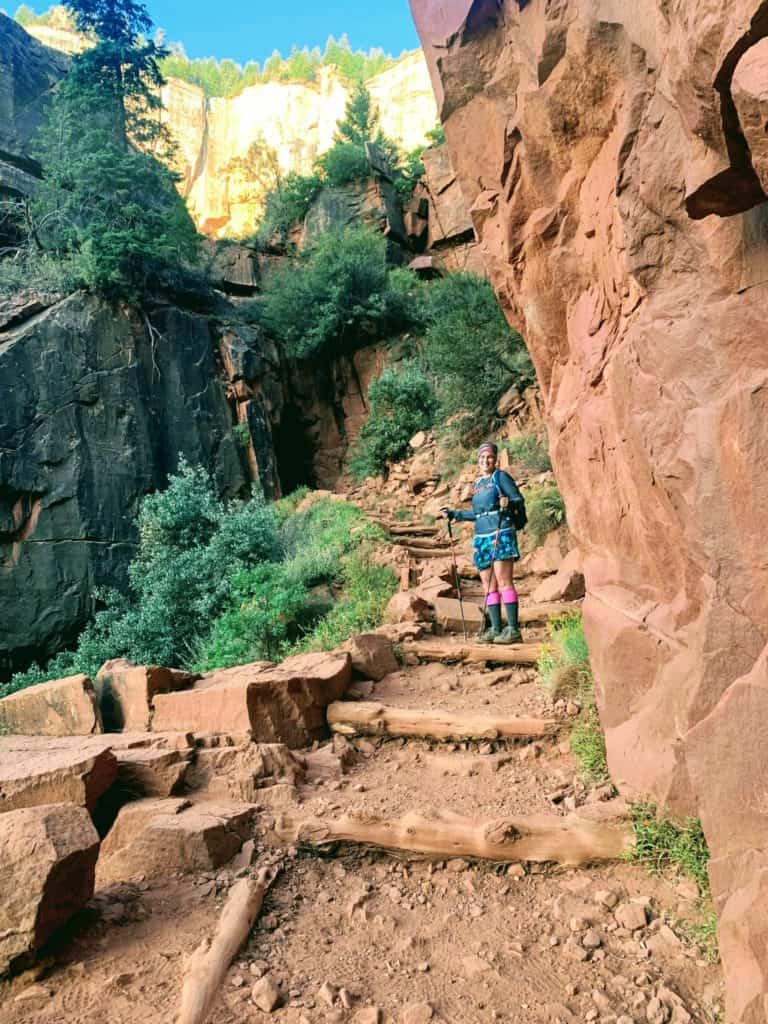
***You’re now ready to start training for a Rim to Rim! Don’t forget to also get acquainted with the full trail report of the Rim to Rim hike!
****You’ve seen my own personal hiking training calendar, now get your OWN customizable and printable template to create your OWN individual hiking training calendar! You can take care of the simplest yet most critical component of training for a Rim to Rim hike right now!
How Much Would 4 Months of Accountability and Coaching Mean to You?
Did you know that I offer 1:1 Coaching Services for the R2R hike?
Take a look, and COMPLETE THIS FORM to get started today!
PIN for LATER!
Last update on 2023-08-09 / Affiliate links / Images from Amazon Product Advertising API

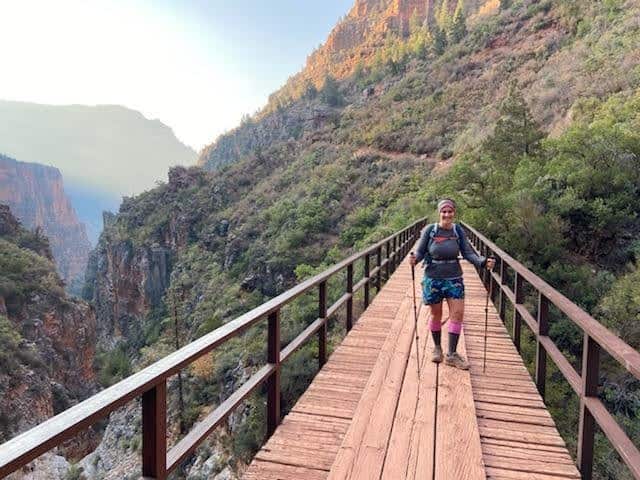
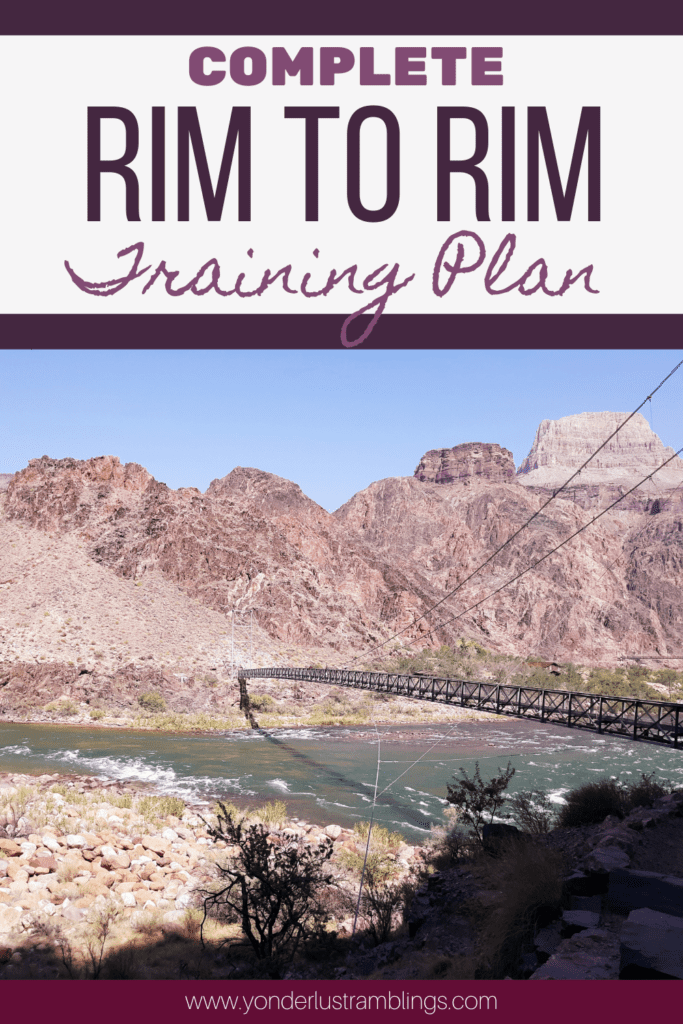





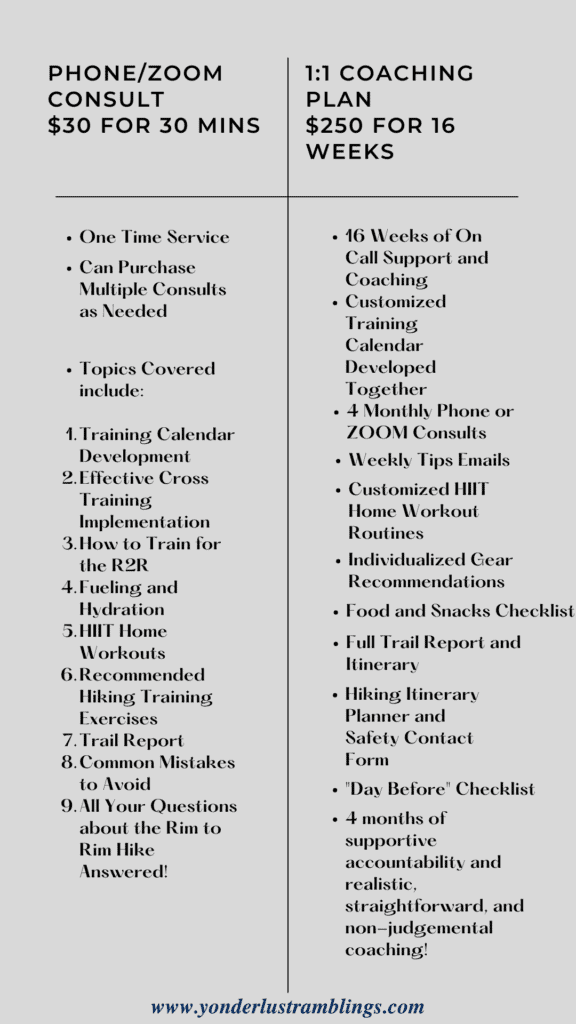

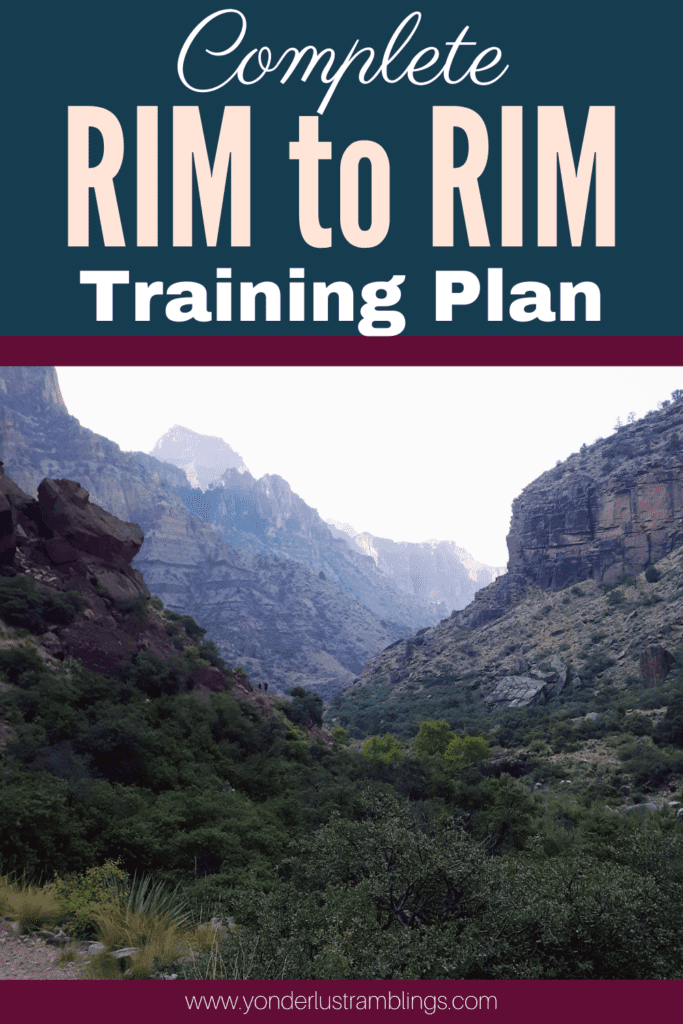
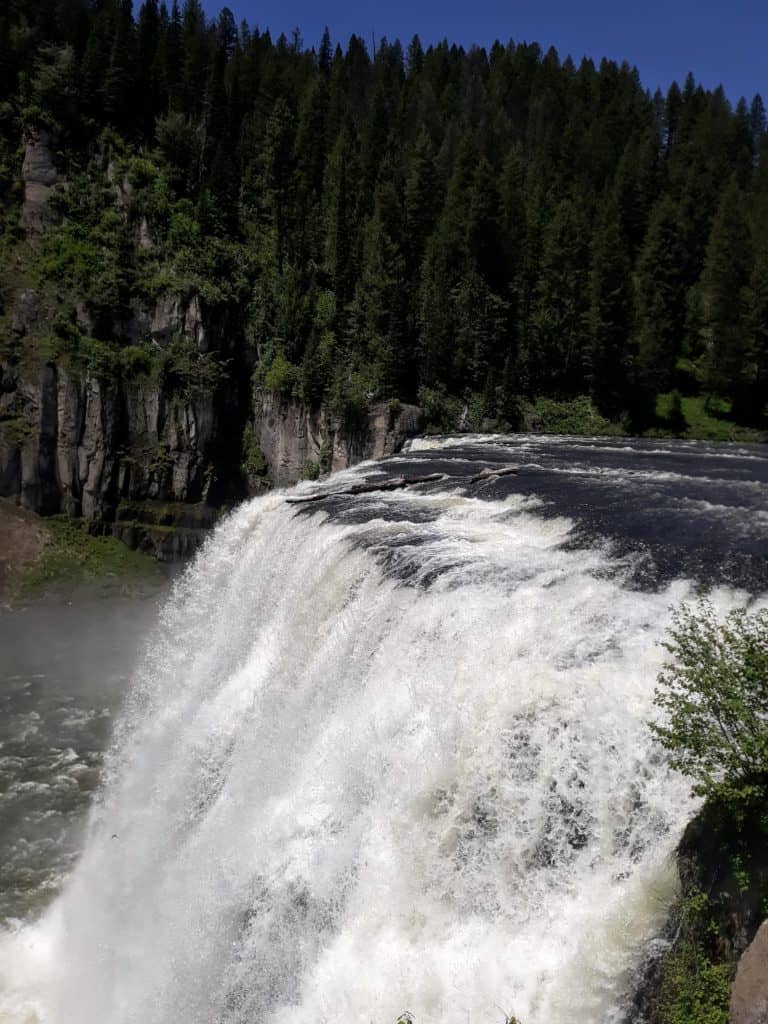
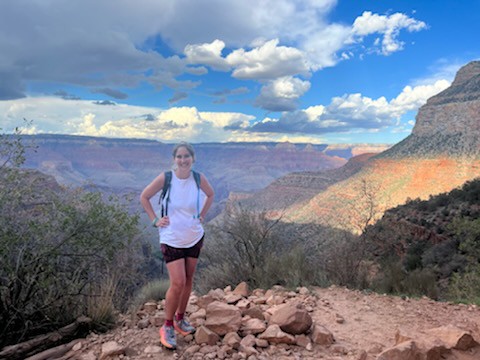
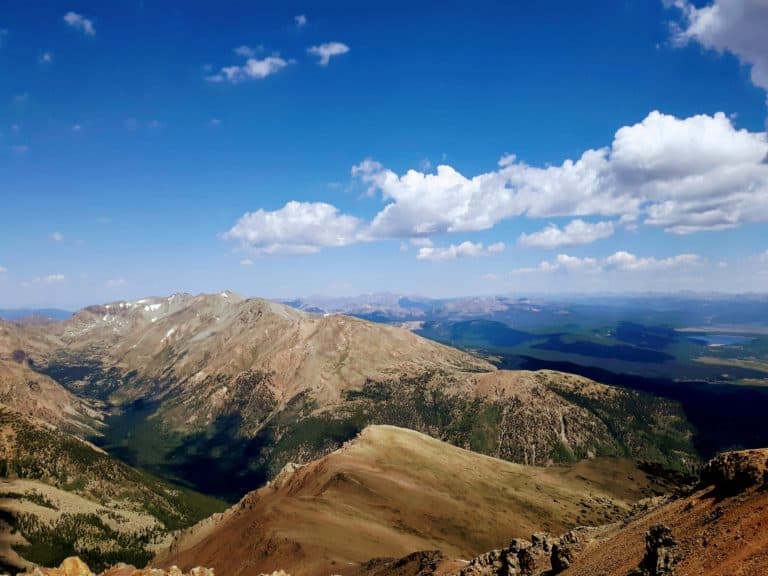
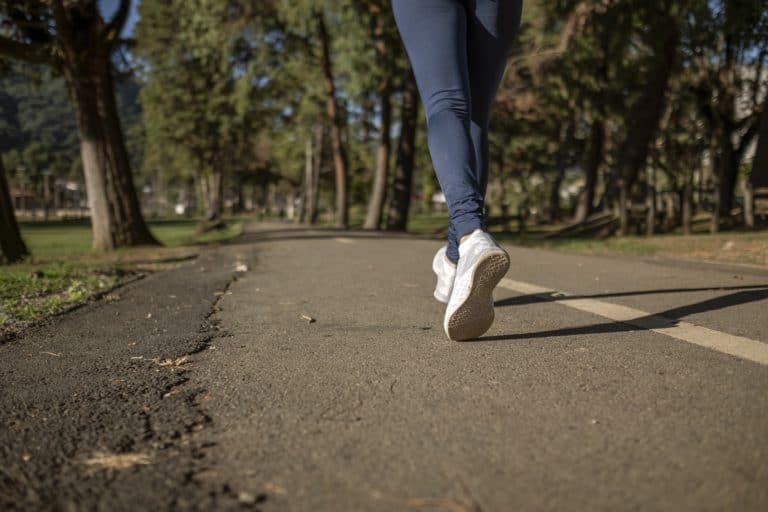


Thanks for sharing this! My husband and I with a group of people are planning on hiking GC in May 2022 and this post has been very helpful! We are marathoners but relatively new to long-haul hiking!
Hey Sheila,
Your marathon background will come in super handy with hiking the Grand Canyon Rim to Rim! My running background absolutely helped me, because pacing and efficient speed are very beneficial. Not to mention, running marathons is about the same length as hiking the Rim to Rim, so you will be very used to this type of long distance, all day challenge. And I imagine you are probably already very familiar with adequate fueling, and how to listen to your body’s cues over long distances and lots of exertion. All this is going to help you so much! Just don’t underestimate the environmental factors in May, and make sure to cater your gear list to Grand Canyon friendly specific gear 🙂
I’m aware that people traditionally recommend the Rim to Rim early or late season (e.g. May-June or Oct) due to the punishing temperatures in the summer. How common is it to hike at night by headlamp to avoid temperatures during the summer months? Mountain biking at night has become commonplace due to high-intensity LEDs. I have an opportunity to train for a Rim-to-Rim in August and am thinking of trying to plan it such that I would reach Phantom Ranch by 5 or 6 a.m.?
Good afternoon, your planning guide is very helpful. I have a couple questions. we are from out of town, should we leave our car at the south rim and shuttle to start at the north rim or leave our car at the north rim and shuttle back to it? Im worried about missing some detail and being miles from the trailhead, my car or the hotel?
awesome info. I am starting the planning process for my first rim-to-rim hike. This was extremely helpful.
Good to hear Steve, best of luck in the planning process for your hike!